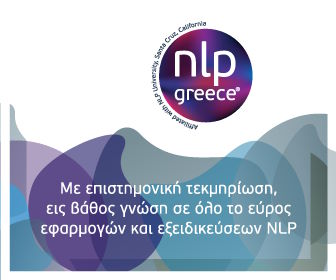Self-harm is the non-fatal intentional acts of self-poising or self-injury irrespectively of the extent of suicidal intent. Self-harming has been a growing problem, it is estimated that there are more than 200000 persons presenting with self-harming in general hospitals over the UK at the moment. Self-harming is most common in younger people aged between 15 to 35 years old and moreover, it appears to be more frequent in women than men and also decreases over lifespan.
A history of self-harming is the strongest risk factor for suicide across a range of psychiatric disorders.
Furthermore, the repetition of the self-harming behaviour further increases the risk of suicide. Given the size of the problem of self-harming and the frequency with which is repeated, it is important that effective treatment interventions are developed for this patient group.
There is not much good evidence yet of which therapies work well for people who have harmed themselves. However, what evidence there is, suggests that problem-solving therapy and cognitive-behavioural therapy are useful. Although there is a growing evidence for the effectiveness of long-term psychological therapies to reduce the risk of self-harm, few interventions have been developed specifically for acute settings. Most research has been conducted in emergency departments concerning direct care and support of the self-harming individual.
When it comes to Cognitive Behavioural Therapy studies reported that evidence seems to be sufficient to conclude that CBT is effective in adult patients following self-harm; CBT was associated with significant improvements in scores for both depression and hopelessness as well as suicidal ideation in the post assessments of their study.
Cognitive Behavioural Psychotherapy (CBT; comprising of cognitive-behavioural and problem-solving therapy) is associated with fewer patients repeating self-harm in 6 months. Furthermore, this therapy is associated with improvements in depression, hopelessness, suicidal ideation and problem solving.
Another therapeutic intervention becoming very popular in supporting deliberate self-harmers is the Dialectical Behavioural Therapy. Despite a range of psychosocial, educational and pharmacological interventions, dialectical behavioural therapy has also been shown to reduce repeat episodes of self-harming. Dialectical Behavioural Therapy can also reduce the frequency of self-harming in patients with borderline personality disorder who engage in more than one self-harming acts.
DBT has already demonstrated considerable success in dealing with both non suicidal self-harm, suicidal behaviours and violence.
On the other hand studies have also shown that there are four features of Cognitive Analytic Therapy, which are effective in the treatment of deliberate self-harmers. These are flexibility, type of focus, rapid engagement and the use of problem-solving techniques. However, it is noted that the time limited aspect of CAT may be a limitation with this patient group, due to their increased sensitivity to the experience of separation and loss.
ΔΥΣΤΥΧΩΣ ΔΕΝ ΔΙΑΛΕΞΑ ΤΟΥΣ ΓΟΝΕΙΣ ΜΟΥ
3 Μήπως μεγάλωσες και εσύ με γονείς που ήταν απόμακροι; Δύστροποι; Εγωκεντρικοί; Απορριπτικοί; Ελεγκτικοί; Επικριτικοί; Μη-διαθέσιμοι;
Ανακάλυψε τους τέσσερις τύπους τοξικών-ανώριμων γονέων
In a further article we will continue discussing possible interventions for deliberate self-harming as well as propose the option that according to research works better with this particular client group.
Back to the issue that has been highly researched over the recent years, self-harming behaviour. As discussed in previous article, there has been a large amount of research investigating the possible successful or not so successful interventions when it comes to the self-harming behaviour.
Another therapeutic intervention usually mentioned by the literature is Acceptance and Commitment Therapy. One mechanism via which mindfulness based techniques are hoping to have an impact on such behaviours is through a reduction in experiential avoidance. Experiential avoidance is a key construct in ACT, and it is defined as the attempt to alter the form, frequency, or situational sensitivity of negative private events (e.g. thoughts, feelings, and physiological sensations). An experiential avoidance model of violence and self-harm postulates that such acts are, in fact, attempts to avoid experiences such as thoughts, feelings, somatic sensations or other internal experiences that are uncomfortable or distressing. A reduction in experiential avoidance is therefore the fundamental goal of ACT.
ACT’s techniques involve intentionally bringing one’s attention to the internal and external experiences occurring in the present moment.
Such interventions have been shown to be of considerable value in a number of disorders, including for psychosis as well as self-harming behaviour in an acute ward setting.
ΔΥΣΤΥΧΩΣ ΔΕΝ ΔΙΑΛΕΞΑ ΤΟΥΣ ΓΟΝΕΙΣ ΜΟΥ
3 Μήπως μεγάλωσες και εσύ με γονείς που ήταν απόμακροι; Δύστροποι; Εγωκεντρικοί; Απορριπτικοί; Ελεγκτικοί; Επικριτικοί; Μη-διαθέσιμοι;
Ανακάλυψε τους τέσσερις τύπους τοξικών-ανώριμων γονέων
There is a clear evidence base for the efficacy of mindfulness based treatments across various psychopathologies and there is some indication that this may also translate to the use of treatments such as ACT for the management of acute self-harm or violence. The experience of utilising ACT based treatments on a psychiatric intensive care unit has produced some positive results. The studies, however, were not always controlled and each patient undergoing the intervention was also subject to treatment as usual (i.e. standard pharmacological therapies as appropriate to their condition) which would also have an effect on levels of aggressive and abusive behaviours and self-harm ideation. More research is, therefore, required to further verify the effect of such interventions with controlled trials across wider samples using validated outcome measures.
Another technique is the Volitional Help Sheet which is proved to have no overall effect on self-harming individuals. However, on post-hoc analyses it is suggested that VHS might be effective in reducing the number of self-harming repetitions following a suicide attempt in people who complete the help sheet and who have been previously admitted to hospital with self-harm.
There is good evidence to suggest that the VHS helps to focus on the effectiveness of safety-planning and psychosocial risk or even needs assessment alone. On the other hand, VHS can be harmful when used with individuals who do not have a long history of multiple episodes of self-harming.
It appears that VHS can be effective in reducing self-reported self-harm intentions but were proved not to be effective in reducing the proportion of participants engaging in self-harming behaviour.
Moreover, this intervention has the potential to increase rumination and negative affect the person by potentially leading to a repetition of the self-harming behaviour.
A systematic review and meta-analytic review of brief contact interventions such as letters, green cards, telephone calls and postcards has shown that cannot be yet recommended for widespread clinical implementation when it comes to supporting people who have self-harmed. Postcards especially did not reduce the repetition of self-harm in other studies.
Finally, it appears that there is a considerable amount of research around the possible psychosocial treatments for adults who self-harm and an amount of different types of interventions. However, not many interventions have been evaluated in multiple studies and therefore are not amenable to meta-analysis.
According to NICE guidelines, the aims of longer-term treatment of self-harming may be around decreasing or stopping the self-harming behaviour, decreasing or stopping other risk-related behaviour, improving social or occupational functioning; improving quality of life and improving any associated mental health conditions. Furthermore, NICE is recommending an amount of at least six sessions of a psychological intervention specifically structured for people who self-harm. This may include CBT, psychodynamic or problem-solving elements. It is important to work collaboratively with the person to identify problems causing distress or leading to self-harm. Moreover, if stopping self-harm is unrealistic in the short term, it is proposed to consider less destructive or harmful methods of self-harm.
Self-harming is a difficult and very demanding situation for both therapist and patient. Creating a therapeutic a trusting environment is vital no matter the therapeutic interventions being used.
References
Bach, P. and Hayes, S.C. (2002) The use of Acceptance and Commitment Therapy to prevent the rehospitalization of psychotic patients: a randomized controlled trial. Journal of Consulting and Clinical Psychology. 70(5): 1129–1139.
Betz, M. E., Wintersteen, M., Bourdreaux, E. D., et al. (2016). Reducing suicide risk: opportunities in the emergency department. Ann Emerg Med, 68: 785-65.
Chapman, A., Gratz, K. and Broan, M. (2006) Solving the puzzle of deliberate self-harm: the experiential avoidance model. Behavior Research and Therapy. 44(3): 371–394.
Cowmeadow, P. (1994). Deliberate self-harm and cognitive analytic therapy. International Journal of Short-Term Psychotherapy, 9(2-3), 135-150.
Fruzzetti, A. and Levensky, E. (2000) Dialectical behaviour therapy for domestic violence: rationale and procedures. Cognitive and Behaviour Practise. 7(4): 435–447.
Fleischmann, A., Bertolote, J., de Leo, D., et al. (2005). Characteristics of attempted suicides seen in emergency-care settings of general hospitals in eight low- and middle-income countries. Psychol Med, 35: 1467–74.
Hawton, K., Harriss, L., Hall, S., Simkin, S., Bale, E. (2003). Deliberate self-harm in Oxford, 1990 2000: a time of change in patient characteristics. Psychol Med, 33: 987–96.
Hawton, K., Bergen, H., Casey, D., et al. (2007). Self-harm in England: a tale of three cities. Multicentre study of self-harm. Soc Psychiatry Psychiatr Epidemiol, 42: 513–21.
Hawton, K., Harriss, L., (2008). The changing gender ratio in occurrence of deliberate self-harm across the life-cycle. Crisis, 29: 4–10.
Hawton, K., Witt, K. G., Taylor-Salisbury, T, L., Arensman, E., Gunnell, D., Hazel, P., Townsend, E., & van Heeringen, K. (2016). Psychosocial Intervention Following self-harm in adults: a systematic review and meta-analysis. Published Online July 12, 2016;
http://dx.doi.org/10.1016/S2215-0366(16)30070-0
Leitner, M., Barr, W., & Hobby, L. (2008). Effectiveness of interventions to prevent suicide and suicidal behaviour: a systematic review. Health and Community Care Research Unit, Liverpool University and Scottish Government Social Research.
Linehan, M., Comtois, K.A., Murray, A.M., Brown, M.Z., Gallop, R.J., Heard, H.L., Korslund, K.E., Tutek, D.A., Reynolds, S.K. and Lindenboim, N. (2006) Two-year randomized controlled trial and follow-up of dialectical behavior therapy vs therapy by experts for suicidal behaviors and borderline personality disorder. Archives of General Psychiatry. 63(7): 757–766.
Milner, A. J., Carter, G., Pirkis, J., Robinson, J., & Spittal, M. J. (2015). Letter, green cards, telephone calls and postcards: systematic and meta-analytic review of brief contact interventions for reducing self-harm, suicide attempts and suicide. The British Journal of Psychiatry, 206: 184-190.
NICE Guidelines (2011). Self-harm: Longer-term management: NICE guideline DRAFT: 21-24.
Muehlenkamp, J. (2006) Empirically supported treatments and general therapy guidelines for non-suicidal self-injury. Journal of Mental Health Counseling. 28(2): 166–185.
Razzaque, R. (2012). An acceptance and commitment based protocol for the management of acute self-harm and violence in severe mental illness. Journal of Psychiatric Intensive Care, 00: 1-5.
Zahl, D., & Hawton, K. (2004) Repetition of deliberate self-harm and subsequent suicide risk: long-term follow-up study in 11 583 patients. Br J Psychiatry, 185: 70–75.
Witt, K. (2017). The use of emergency department-based psychological interventions to reduce repetition of self-harm behaviour. Retrieved: www.thelancet.com/psychiatry Date: November 2017.
Συγγραφή - Επιμέλεια Άρθρου
 Ψυχολόγος - MSc Forensic Mental Health.
Ψυχολόγος - MSc Forensic Mental Health.
Απόφοιτος του Τμήματος Ψυχολογίας του Αριστοτέλειου Πανεπιστημίου Θεσσαλονίκης.
Επιστημονική Συνεργάτιδα του E-Psychology
Επικοινωνία: Αυτή η διεύθυνση ηλεκτρονικού ταχυδρομείου προστατεύεται από τους αυτοματισμούς αποστολέων ανεπιθύμητων μηνυμάτων. Χρειάζεται να ενεργοποιήσετε τη JavaScript για να μπορέσετε να τη δείτε.











































